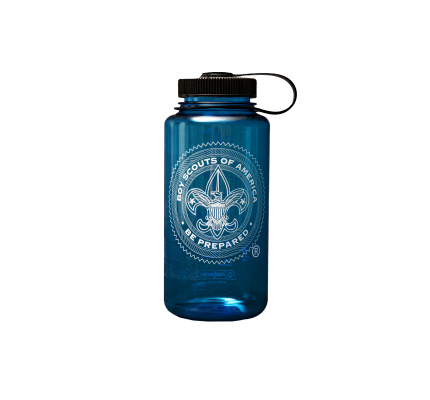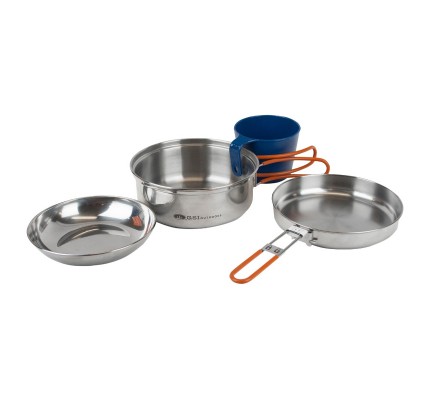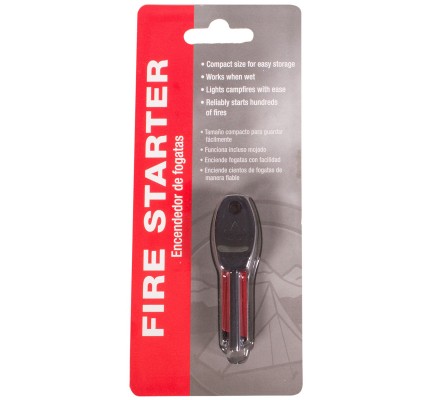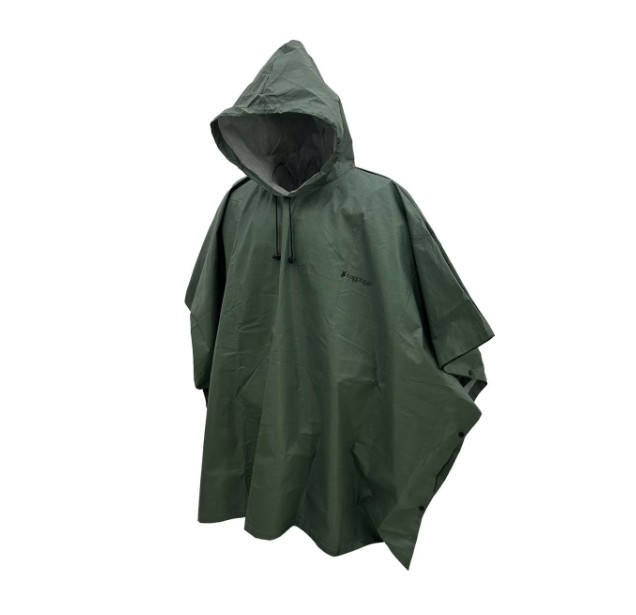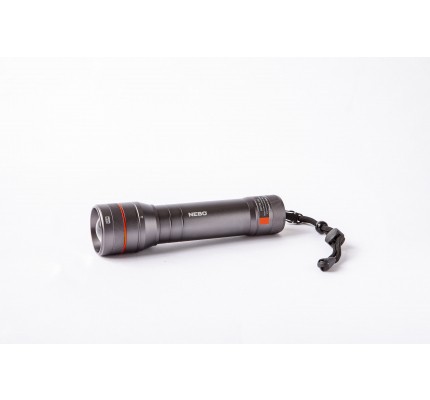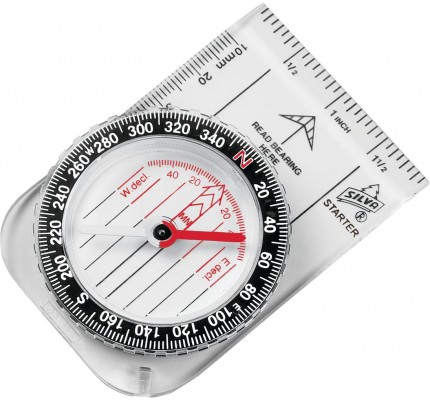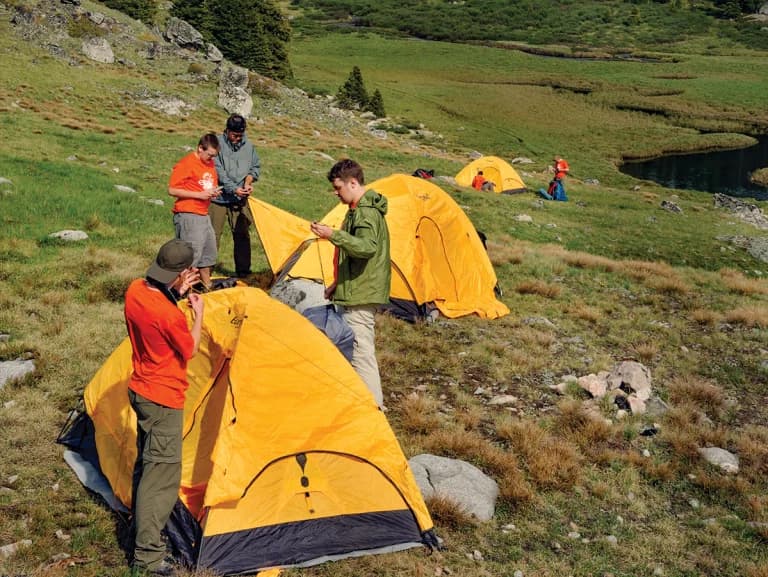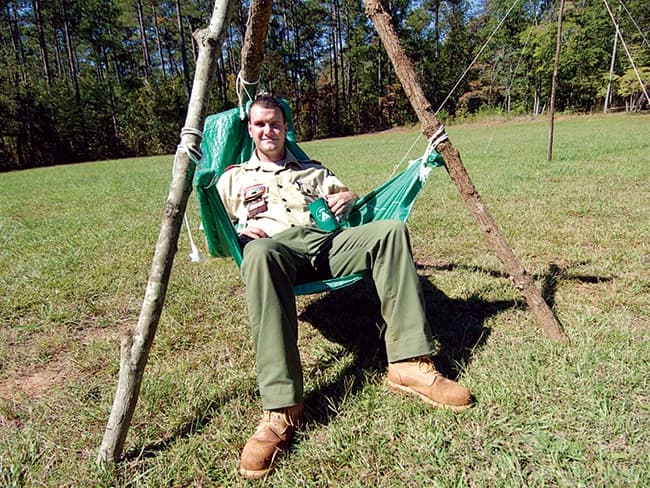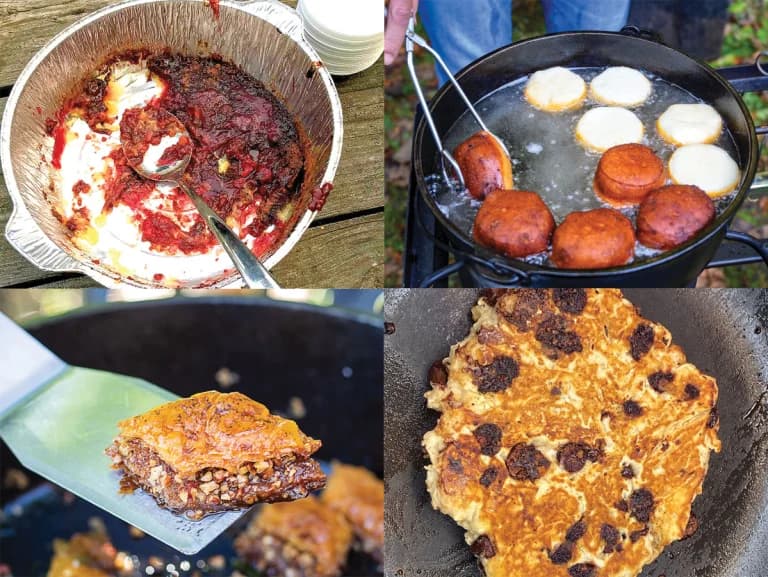Camping Merit Badge
 Eagle Required
Eagle Required
Camping
Merit Badge
Scouting America Merit Badge Hub
Scouting America
Merit Badge Hub

Camping Merit Badge Overview
Camping is one of the best-known methods of the Scouting movement. When he founded the Scouting movement in the early 1900s, Robert Baden-Powell encouraged every Scout to learn the art of living out-of-doors. He believed a young person able to take care of himself while camping would have the confidence to meet life’s other challenges, too.
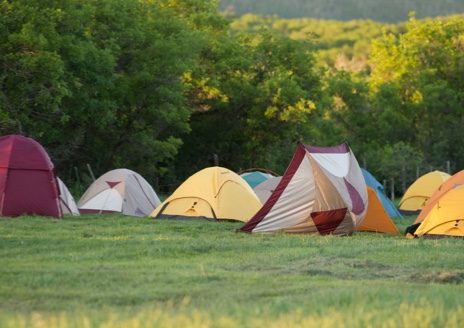
Camping Merit Badge Requirements
The previous version of the Merit Badge requirements can be found in Scoutbook
The requirements will be fed dynamically using the scout book integration
NOTE: The official merit badge pamphlets are now free and downloadable HERE or can be purchased at the Scout Shop.
1.
Do the following:
- (a)
Explain to your counselor the most likely hazards you may encounter while participating in camping activities and what you should do to anticipate, help prevent, mitigate, and respond to these hazards.
Resources: Camping Safety Tips (video)
What to Do in a Bear Encounter (and How to Avoid One) (video) - (b)
Discuss with your counselor why it is important to be aware of weather conditions before and during your camping activities. Tell how you can prepare should the weather turn bad during your campouts.
Resources: 5 Mistakes EVERY New Camper Makes in WET WEATHER (video)
Cold Weather Camping Tips (video) - (c)
Show that you know first aid for and how to prevent injuries or illnesses that could occur while camping, including hypothermia, frostbite, heat reactions, dehydration, altitude sickness, insect stings, tick bites, snakebite, blisters, and hyperventilation.
Resources: Backpacking First Aid (What to Carry + Foot Care, Snakes, Poison Plants, Hypothermia, etc) (video)
First Aid for Snakebites (video)
Types of Heat Reactions (website)
Bad Bugs and Their Bites (website)
2.
Learn the Leave No Trace Seven Principles and the Outdoor Code, and explain what they mean. Write a personal and group plan for implementing these principles on your next outing.
Resources: Principles of LNT (video)
The Outdoor Code (website)
LNT/Outdoor Code Planning (PDF)
Resources: Principles of LNT (video)
The Outdoor Code (website)
LNT/Outdoor Code Planning (PDF)
3.
Make a written plan for an overnight trek and show how to get to your camping spot by using a topographical map and one of the following:
Resources: How to Read a Topographic Map (video)
Scouting America Planning Worksheet (PDF)
Resources: How to Read a Topographic Map (video)
Scouting America Planning Worksheet (PDF)
- (a)
Compass
Resource: How to Use a Compass (video) - (b)
GPS receiver
Resource: Using a GPS with a Map and Compass (video) - (c)
Smartphone with a GPS app.
Resource: How to Use a Smartphone as a GPS (website)
4.
Do the following:
- (a) Make a duty roster showing how your patrol is organized for an actual overnight campout. List assignments for each member.
- (b) Help a Scout patrol or a Webelos Scout unit in your area prepare for an actual campout, including creating the duty roster, menu planning, equipment needs, general planning, and setting up camp.
5.
Do the following:
- (a)
Prepare a list of clothing you would need for overnight campouts in both warm and cold weather. Explain the term "layering."
Resources: Cold Weather Gear (website)
Warm Weather Gear (website) - (b)
..Discuss footwear for different kinds of weather and how the right footwear is important for protecting your feet.
Resource: The ONE Tip You Need to Choose Between Hiking Boots, Shoes, and Trail Runners (video) - (c)
Explain the proper care and storage of camping equipment (clothing, footwear, bedding).
Resource: How to Clean and Store Camping Gear (website) - (d)
List the outdoor essentials necessary for any campout, and explain why each item is needed.
Resources: 10 Essentials for Scout Camping (website)
The 10 Scout Basic Outdoor Essentials (website) - (e) Present yourself to your Scoutmaster with your pack for inspection. Be correctly clothed and equipped for an overnight campout.
6.
Do the following:
- (a)
Describe the features of four types of tents, when and where they could be used, and how to care for tents. Working with another Scout, pitch a tent.
Resources: Types of Tents (video)
Choosing a Tent (website) - (b)
Discuss the importance of camp sanitation and tell why water treatment is essential. Then demonstrate two ways to treat water.
Resources: Types of Water Purification (video)
How to Wash Dishes at Camp (video) - (c)
Describe the factors to be considered in deciding where to pitch your tent.
Resources: How to Pick a Campsite (video)
How to Choose a GREAT Campsite *AVOID THESE MISTAKES* (video) - (d)
Tell the difference between internal- and external-frame packs. Discuss the advantages and disadvantages of each.
Resource: How to Choose a Backpack (video) - (e)
Discuss the types of sleeping bags and what kind would be suitable for different conditions. Explain the proper care of your sleeping bag and how to keep it dry. Make a comfortable ground bed.
Resources: Choosing a Sleeping Bag (video)
Backpacking Bags (video)
Caring for a Sleeping Bag (video)
Cleaning a Sleeping Bag (video)
7.
Prepare for an overnight campout with your patrol by doing the following:
- (a) Make a checklist of personal and patrol gear that will be needed.
- (b)
Pack your own gear and your share of the patrol equipment and food for proper carrying. Show that your pack is right for quickly getting what is needed first, and that it has been assembled properly for comfort, weight, balance, size, and neatness.
Resource: How to Pack a Backpack for Easy Access and Comfort (video)
8.
Do the following:
- (a) Explain the safety procedures for:
- (1)
Using a propane or butane/propane stove
Resource: How to Use a Propane Stove (video) - (2)
Using a liquid fuel stove
Resource: How to Use a Liquid Fuel Stove (video) - (3) Proper storage of extra fuel.
- (b)
Discuss the advantages and disadvantages of different types of lightweight cooking stoves.
Resource: Canister vs Liquid Fuel Stoves (video) - (c)
Prepare a camp menu. Explain how the menu would differ from a menu for a backpacking or float trip. Give recipes and make a food list for your patrol. Plan two breakfasts, three lunches, and two suppers. Discuss how to protect your food against bad weather, animals, and contamination.
Resource: Food Storage & Protection: Techniques for Bears & Mini-Bears (video) - (d) While camping in the outdoors, cook at least one breakfast, one lunch, and one dinner for your patrol from the meals you have planned for requirement 8(c). At least one of those meals must be a trail meal requiring the use of a lightweight stove.
9.
Show experience in camping by doing the following:
- (a) Camp for at least 20 nights at designated Scouting activities or events. One long-term camping experience of up to six consecutive nights may be applied toward this requirement. Two nights may be counted toward the total for each additional long-term camping trip. Each night must be spent either under the sky, in a tent you have pitched yourself (if a tent is provided and already set up, you do not need to pitch your own), in a hammock that is safely strung outdoors, in a lean-to, or other three-sided shelter with an open front. Nights spent in indoor lock-in events, cabin camping, hotel stays, or other covered accommodations do not count toward the 20 nights.
- (b) On any of these camping experiences, you must do TWO of the following, only with proper preparation and under qualified supervision.
- (1)
Hike up a mountain, gaining at least 1,000 vertical feet.
Resource: Training for Elevation Gain (video) - (2)
Backpack, snowshoe, or cross-country ski for at least 4 miles.
Resource: Learn to Snowshoe (video) - (3)
Take a bike trip of at least 15 miles or at least four hours.
Resource: What I Wish I Knew Before Bikepacking (video) - (4)
Take a nonmotorized trip on the water of at least four hours or 5 miles.
Resource: Canoeing With LNT (video) - (5)
Plan and carry out an overnight snow camping experience.
Resource: Winter Camping Tips (video) - (6)
Rappel down a rappel route of 30 feet or more.
Resource: How to Rapel (video) - (c)
On any of these camping experiences, perform a conservation project approved by the landowner or land managing agency. This can be done alone or with others.
Resource: Project Planning Checklist (PDF)
10.
Discuss how the things you did to earn this badge have taught you about personal health and safety, survival, public health, conservation, and good citizenship. In your discussion, tell how Scout spirit and the Scout Oath and Scout Law apply to camping and outdoor ethics.

Get the Camping Merit Badge Pamphlet
Merit Badge Pamphlets are now free and publicly available. Note: Always check www.scouting.org/skills/merit-badges/all/ for the latest requirements.
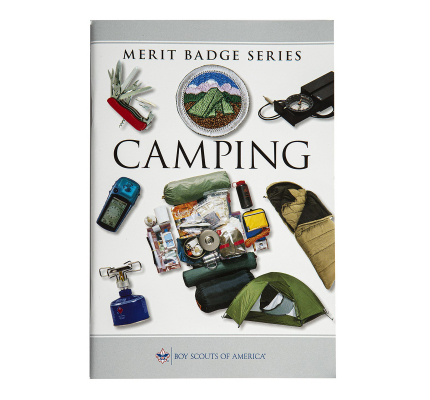
Shop Camping Merit Badge Products
As the exclusive retailer of Scouting America, 35% of every Scout Shop purchase supports the future of Scouting.
$19.95
$6.99
$29.99
$19.99
Discover more about "Camping"

Camping is always fun, but these expert tips and ideas can make your camping trip even better.
1. GET FIT
THE BASICS: Prepare for your trek — be active for 60 minutes or more on most days. This includes walking, bicycling and playing sports. Activities like walking to the bus stop, taking the stairs instead of the elevator and playing active games with your friends also count toward your 60 minutes.
NEXT-LEVEL FITNESS: Add the following activities to your routine at least three times a week:
• Aerobic activities, such as running and cycling
• Muscle-strengthening activities, such as sit-ups, push-ups, pull-ups and weight lifting (Talk to your doctor before beginning a weight-lifting program.)
• Bone-strengthening activities promote bone growth and include running, jumping rope, and participating in sports such as basketball, tennis and volleyball.
2. CHOOSE A GOOD SPOT
THE BASICS: Your local council probably operates a terrific campground. Local and state parks also offer convenient, affordable options nearby. It could be that a family in your unit owns property perfect for camping. All you have to do is ask.
NEXT-LEVEL LOCATIONS: National trail systems like the Appalachian Trail and the Pacific Crest Trail stretch across multiple states and offer the added excitement of camping in famous, historic areas. BSA national high-adventure bases at Florida Sea Base, Northern Tier, Philmont Scout Ranch and the Summit Bechtel Reserve are great camping spots. Just remember they fill up fast, so make your reservation months in advance.
3. PLAN AHEAD
THE BASICS: Take the time to develop a trip plan that answers the following questions: How will you get there? When will you go and when will you return? Who is going with you? What do you need to take with you?
NEXT-LEVEL PLANNING: Have a back-up plan in place. Ideal itineraries include demanding tasks, along with more manageable alternatives should the situation change. Getting the basics in place — while stopping short of planning out every minute of your trek — will allow you to adapt to changing circumstances in the field.
4. GEAR UP
THE BASICS: You’ll take two kinds of gear on campouts: personal gear that you will use and group gear that will be shared by your patrol. Start with the Scout basic essentials (find them here) and work your way out from there, including sleeping gear, an eating kit, a clean-up kit and personal items.
NEXT-LEVEL GEAR: Take a telescope and gaze in amazement at the stars. The night sky looks totally different when you’re away from big-city lights. Take a football or soccer ball for downtime. Pack ultralight by sharing heavy equipment with other Scouts and replacing heavy hiking boots with sturdy running shoes.
5. SLEEP WELL
THE BASICS: The best tent is an A-frame or dome tent that sleeps two or three Scouts. The fewer poles it has, the easier it will be to set up. A window lets the breeze from outside keep you cool. A second window makes it even more comfortable.
NEXT-LEVEL SLEEP SYSTEMS: If conditions allow, sleep on a hammock instead of inside a tent. Or take a simple tarp and sleep in a sleeping bag on the ground, with a ground cloth between you and the grass. A bivouac sack is a waterproof envelope that can be slipped over a sleeping bag for extra protection from the elements.
6. EAT WELL
THE BASICS: Meal planning begins with knowing how many Scouts will be on the trip and how long you’ll be away from home. Make a list of any special food needs in your unit. Make sure you know the budget so you’ll know how much to spend on supplies. Plan healthy meals that will provide everyone with the energy needed to complete all activities planned for the campout.
NEXT-LEVEL MEALS: Before you leave, divide your ingredients into their correct serving sizes, place them in separate resealable bags and label them: “Monday lunch,” “Tuesday snack,” “Wednesday breakfast.” At mealtimes, you’ll already have all your ingredients measured out and ready to go. Take herbs and spices to make everything taste better. Dutch-oven cooking takes more time, but the results are worth it, because your food will be extra delicious.
7. APPRECIATE NATURE
THE BASICS: When you’re outdoors, take some time to look around you. A campout is not about getting through the weekend as fast as you can; it’s about enjoying the journey. Look for evidence of animals, such as animal sounds, footprints and droppings.
NEXT-LEVEL NATURE APPRECIATION: Take a pencil, notebook, animal identification guide and a pair of binoculars. Make it a goal to identify five different species during your trip. Keep a list in your
notebook of what you see. Have everyone try to identify five different species of plants or trees based on the
shape of its leaves.
8. TAKE A HIKE
THE BASICS: Pack your Scout basic essentials in a small pack. Make sure you know exactly what route you’ll be taking and how difficult the terrain will be. Wear non-cotton clothing that will keep you comfortable no matter how much you sweat or how much it rains. But go ahead and pack rain gear, too.
NEXT-LEVEL TREKKING: Instead of a day hike carrying basic supplies, go on a multiday trek and carry everything you need to live comfortably for days on the trail. Organization is key. Take only what you need. No extras. Share gear: If your buddy carries your tent, you carry the cooking supplies. Put things you don’t want to get wet in waterproof bags. The pack’s center of gravity should be high and close to your back.
9. BUILD A CAMPFIRE
THE BASICS: A safe fire site is one from which the fire cannot spread. Look for established fire rings, grills or stone fireplaces. Keep a bucket of water nearby. Gather tinder, kindling and fuel wood before you strike your first match. Don’t break anything off a tree; gather only what you find on the ground.
NEXT-LEVEL CAMPFIRES — DON’T BUILD ONE: Campfires sterilize soil, char the ground and otherwise spoil the appearance of the land. They must be watched nonstop to make sure they don’t spread. The downed materials you gather for a campfire could otherwise provide shelter for forest critters. Consider skipping the campfire altogether and use a stove for cooking.
10. LEAVE NO TRACE
THE BASICS: Before you leave, inspect your campsite for trash and spilled foods. Remove anything you find, even if it didn’t belong to you in the first place. Leave rocks, plants and other natural objects exactly as you found them. Take only pictures. Leave only footprints.
NEXT-LEVEL LNT: Organize a service project to improve the area beyond your camping spot. Talk with the land owner about what needs to be done. Remove trash from areas you wouldn’t normally think about. (You’ll be shocked by the trash you find at the bottoms of rivers and streams.) Other project ideas include erosion control, removal of invasive species and tree planting.

Keep your stuff out of the dirt by building a table for your camp. It’s easy if you have the pioneering skills.
WHAT YOU’LL NEED
Two spars up to six feet long (or long enough to be lashed to both trees) and about 3 inches in diameter
Several shorter spars, the number depending on the distance between the trees
Two sections of rope, both around 25 feet in length
Four sections of rope, each around 50 feet in length depending on the diameter of the trees (Each can be made with two sections of 25-foot rope tied together with a square knot, or a sheep’s bend knot if rope is of two different diameters)
WHAT YOU’LL DO
Step One: Pick out two trees up to five feet apart with nothing between them. Have one person hold one of the longer spars horizontally across both trees. Tie a clove hitch around one spar right next to the tree, then use a square lash to attach the spar to the tree.
Step Two: Repeat the square lashing to the second tree at the other end of this spar, and repeat the whole process with the second spar on the other side of the tree. The lashings on both sides of the tree will have to overlap each other to ensure that the spars are level with each other.
Step Three: Lay the shorter spars across the two spars that are now attached to the trees. Lash the shorter spars to the longer spars with a floor lashing.
Step Four: Enjoy your new camp table.

Picking a place to pitch a tent isn’t always simple. You could find a flat spot, but the site might be in a low-lying area and prone to flooding if it rains a lot.
To find a place you can safely and comfortably sleep and eat outdoors, consider these nine factors:
Environmental Impact
Use established campsites whenever you can, or camp on durable surfaces that won’t be damaged by you and your fellow Scouts when walking around. If you must move objects, like logs or rocks, return everything to its original spot before you leave.
Safety
Pitch your tent away from dead trees or trees with limbs that might fall in a storm. Avoid camping near lone trees, mountaintops, high ridges and other likely lightning targets.
Find a site away from low-lying places that could fill with water during a flash flood, such as valleys, canyons and banks of small, shallow rivers. Some signs of these areas are debris caught in underbrush or grass bent over in the same direction. Higher ground can be dangerous if you see signs of erosion.
Size
Find a place big enough for your patrol to set up its tents, and cook meals in separate areas. Also, make sure there is enough space to move around without tripping over tent stakes and guylines.
Comfort
In the summer, look for a shady site where breezes can help cool your tent and chase away mosquitoes. In the winter, find a site where trees and hillsides provide a natural windbreak. Regardless of the time of year, place your tent on the flattest spot possible.
Water
You’ll need plenty of water for drinking, cooking and cleaning. Public water supplies are the safest and can be found in most frontcountry campsites. Water from streams, rivers or lakes should be properly treated before use. In some dry places, you might need to carry all your water to camp.
Fire
Where fires are not allowed or where wood is scarce, plan on using a camp stove to heat water and cook food. Where fires are permitted, look for a campsite with an existing fire ring. Use firewood that is dead and down; never cut live trees.
Privacy
Respect the privacy of others by selecting campsites away from theirs. Trees, bushes and the shape of the terrain can screen your camp from trails and neighboring campsites. Keep noise down so you won’t disturb nearby campers, and respect quiet hours at public campgrounds and Scout camps.
Terrain
Make sure your site has good drainage, natural ground cover and enough sunlight for visibility.
Permission
Check ahead of time with public parks, forest and reserves. They can issue any permits you will need. Never camp on private property without permission.

Relax around camp by building a comfortable chair. It’s easy if you have the pioneering skills.
WHAT YOU NEED
Three spars about 4 inches in diameter, two 8 feet long and one 12 to 15 feet long
Four sections of rope, one 30 feet long and three 3 to 4 feet long
6-by-8-foot (or slightly bigger) tarp, folded into an isosceles triangle
Three heavy rocks slightly smaller than baseballs but larger than golf balls
WHAT YOU’LL DO
campchair-1
Step One: Determine which ends of each spar are the thickest, and designate those as the base of each spar. Lay the two shorter spars together on the ground, parallel to each other, with each base at the same end and even with each other.
Lay the long spar down in the opposite direction, with its base at the opposite end from the bases of the shorter spars, with only about two feet of overlap at the tops. Keep them all parallel.
Use the 30-foot rope to perform a tripod lashing around all three spars.
campchair-2
Step Two: Fold each rock into a corner of the triangle-shaped tarp and twist to create a pocket that will hold the rock. Then tie one of the three shorter ropes around the pocket holding the rock by wrapping a few times and tying off the end with two half hitches.
Be sure to leave 2 to 3 feet of rope available. Repeat for each corner.
campchair-3
Step Three: Attach the tarp to the tripod by wrapping the remaining rope around each spar once or twice and finishing with a taut-line hitch.
The longest spar should act as the back leg of the chair, so attach the rope at higher point on that spar to create the back of the chair.

It’s important to eat balanced meals, but sometimes it’s nice to satisfy your sweet tooth. Here are four tasty recipes to try.
Have a favorite dessert recipe? Send it to us!
OWASIPPE SOUP
Last summer at Owasippe Scout Reservation in Michigan, Matthew Hanson with Troop 41 of Glen Ellyn, Illinois, won a cooking contest with this recipe.
Ingredients
One 20-ounce can crushed pineapple in juice
One 21-oz. can cherry pie filling
1 box chocolate cake mix
¾ cup butter, melted
Directions
Spread the crushed pineapple and its juice into a 12-inch Dutch oven. Spread the cherry pie filling on top of the crushed pineapple. Evenly spread cake mix over both layers, and then pour melted butter on top. Cook in Dutch oven 40-45 minutes with about 15 coals on top and 10 on the bottom. Serve.
CAVE DOUGHNUTS
After exploring the Sullivan Cave in Indiana, Scouts with Troop 797 of Utica, Illinois, made this tasty treat.
Ingredients
1 gallon vegetable oil
Pre-made biscuits
Powdered sugar
Cupcake icing in a can
Directions
Fill a pot two-thirds full with oil. Heat it until dough turns lightly brown when it’s placed in; this might take a couple of tests. Place balls of biscuit dough in the oil and let them cook for about 2 minutes, flipping after about 1 minute. Then remove the cooked dough with tongs and roll them in the powdered sugar. Inject the doughnuts with the icing. Serve
DUTCH OVEN BAKLAVA
Scouts with Troop 1911 of Missoula, Montana, cook this treat annually at summer camp.
Ingredients
24 sheets phyllo dough (a special thin dough, also in stores as filo and fillo)
1 cup butter, melted
1½ cups finely chopped pecans
2 tablespoons sugar
1 teaspoon cinnamon
Lemon honey syrup:
1½ cups sugar
¾ cup water
½ teaspoon lemon juice
1 tablespoon honey
Directions
Prepare honey syrup by combining all ingredients and bringing to a boil for 1 minute. Set aside to cool.
Melt the butter. Mix pecans, sugar and cinnamon; set aside. Generously butter the bottom of a 12-inch Dutch oven. Lay 1 sheet of phyllo dough in the bottom of the Dutch oven. Butter the top, beginning at the edges and working toward the center. Repeat this step until you have placed eight sheets of phyllo dough, buttering each layer.
Sprinkle half of the nut mixture evenly over the phyllo dough.
Place eight more sheets of phyllo dough on top of nut mixture, buttering between each layer. Sprinkle the remaining nut mixture on top.
Repeat with eight more sheets of phyllo dough, buttering each layer. Drizzle any remaining butter on the top.
Cut into diamond-shaped pieces without cutting through the bottom layer of phyllo dough. Place the lid on the Dutch oven and bake at 350 degrees (eight coals on bottom, 16 on top) for 35-40 minutes or until lightly golden. Remove from heat and pour the honey syrup over the baklava. Serve.
S’MORES PANCAKES
The Scouts of Troop 129 of Anchorage, Alaska, make this breakfast meal the first morning of summer camp every year.
Ingredients (feeds 4)
2 cups pancake mix
About 1½ cups water
1 sleeve of graham crackers, crushed
2 cups chocolate chips
1 container marshmallow fluff
Directions
Preheat a pan on medium-high heat and grease with butter. Combine the pancake mix with water, and then stir in the crushed graham crackers and chocolate chips. Place mixture on the pan in desired size and shape. Cook until golden brown on both sides.
Remove from the pan and top with marshmallow fluff and any additional toppings of your choosing. Serve.


